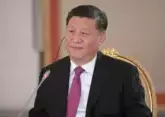As China gradually moved out of its economic coma due to the COVID-19 pandemic, Beijing rightly dropped its GDP growth target and instead prioritized an employment target. The target of creating 9 million jobs is a rather conservative one, given that as many as 27 million urban workers had lost their jobs by March 2020 and 8.7 million college graduates are entering the labor market this year. Added to that, tens of millions of migrant workers are still yet to find jobs and return to the cities, The Diplomat writes in the article How China Can Avert an Employment Crisis.
All told, at least 20 million new jobs are needed. And yet, even this modest target of 9 million jobs is a challenging one. Although the economy has reopened; domestic consumer demand is slow to rise. April’s consumer demand shrank by 7.5 percent year-on-year, an improvement from March’s 15.8 percent contraction but still a drag on growth. Externally, global demand remains sluggish and international trade is slow to recover.
Although China’s exports rose by 4.3 percent year-on-year in April, the rise is too weak to provide much growth impetus and it is likely to reverse as foreign buyers start cancelling orders.
Finally, much of the policy stimulus so far has only limited effects on job creation. For example, directing commercial banks to increase lending to small and medium enterprises by 40 percent may prevent further layoffs but won’t encourage these firms to expand jobs. Local government special purpose bond issuance and infrastructure projects could create construction-related jobs, but the construction industry has a relatively low employment intensity and won’t create sufficient amounts of jobs in a variety of industries.
No doubt, the Chinese government has formulated many specific policies to stimulate job creation. From encouraging online job searches, to providing loans for companies to keep their payroll; from reducing employment-related taxes and fees to providing more training and education; from expanding graduate programs to absorb college graduates to recruiting college students to rural areas — all these policies are helpful and yet they are far from sufficient. Many of the policies are meant to ease job market frictions but do not address cyclical and structural unemployment. Some local governments are providing loans or incentives to businesses to expand their payroll; for example, Wuhan city offers companies a 1,000 renminbi ($140) incentive for every graduate they hire. But facing uncertain demand and lackluster business, companies are reluctant to keep, not to mention expand, their payroll. More training and education could help manage unemployment but won’t solve it. In a nutshell, the sheer size of unemployment and potential long duration of unemployment require much more forceful policies.
Let’s start with the most obvious option: China’s central government should nationalize payroll, like many other countries have done. In this case, the central government would directly subsidize companies’ payroll to avoid layoffs. China’s unemployment insurance system is highly inadequate – only a quarter of the total workforce is covered by unemployment insurance. On top of that, the eligibility standard for unemployment benefits is quite high, which requires at least a year of contribution before applying for benefits. And this prevents many migrant workers from being eligible, as they remain in the same job for only 10 months on average. Given all the difficulties for workers to get unemployment benefits, it would be much more effective to avoid unemployment in the first place. The government could stipulate how much and how long they would cover the payroll, say 70-90 percent of the wages for three months; as well as eligibility standards, e.g. companies that have lost over 20 percent in revenues since the pandemic. The central government would finance the payroll while local governments could administer the payout to ensure logistical efficiency. Nationalizing payroll not only helps mitigate job and income losses for workers and minimize turnover for businesses, but also reinforces anti-poverty efforts, another priority for Beijing.
Nationalizing payroll won’t work for those urban workers who have already been laid off, migrant workers who could not return to jobs, and college graduates who are just entering the labor market. Therefore, in addition to subsidizing payroll, the central government should directly create public jobs. The key of public job creation is two-fold.
First, the central government must provide the financing. As a monetarily sovereign country, the Chinese central government has the financing power to purchase anything for sale that is denominated in the Chinese RMB. That is to say, the Chinese central government can afford to “buy” any amount of labor and pay a RMB-denominated wage to these workers. The central government will never run out of the RMB, as it is the sole provider of the currency. True, there is the danger of inflation – but given the mass unemployment and unutilized resources, it is dubious that inflation pressure would arise any time soon. Currency depreciation also shouldn’t be a concern as China has eased exchange rate targeting and still imposes capital account control. Currently, some local governments recruit college graduates to serve in rural areas out of their own fiscal budgets, like Fujian and Guangdong provinces have done. But local governments have limited financing power, as they are required by law to run balanced budgets, and they are already inundated with debt. It would be much more financially sound and feasible if the central government takes the responsibility of financing public job creation.
Second, public job creations must take into account the real needs of the economy and society. That is to say, public job creation does not mean that governments simply order state-owned enterprises to hire. Rather, local governments must work with communities to find out where and what jobs are needed. Fortunately, there is no shortage of meaningful jobs that can be created, for example, public school teachers, environmental conservation and clean up jobs, ecotourist guides, child care, elderly care, health care, and many more. The point is that there are many jobs that are socially desirable and valuable, but not adequately provided by the private sector. These jobs will hire workers as they are and provide on-the-job training. They will also provide a living wage with benefits, comparable with the regional average.
Some may question the efficiency of public job creation. But leaving workers unemployed amounts to the biggest inefficiency. Some may worry about the fiscal space of the government. But as pointed out by many modern money theorists, the Chinese central government, like many other monetarily sovereign countries such as the United States, Japan, and the United Kingdom, is not faced with a financial constraint, as all these countries have put forward trillion-dollar fiscal stimulus packages. Some may be concerned about inflation. But hiring workers to increase supply, rather than only handing out income supplements to the unemployed to maintain consumption demand, would only help dampen inflationary pressure. And finally, some may fret about “crowding out” private employment. But again, there are more job seekers than vacancies in the foreseeable future. And public jobs generate income and demand, as well as much needed social services, that could in fact “crowd in” private investment and jos.
As U.S. Congresswoman Pramila Jayapal has said, “Mass unemployment is a policy choice. It is a bad policy choice.” Unemployment not only impedes economic growth but leads to poverty, inequality, insecurity and social unrest. It is time for the Chinese government to undertake immediate, bold, and effective policy to directly create jobs and provide livelihood to its people.










